Every system planner and operator of industrial process plants or furnaces is legally obliged to minimise risk by implementing the use of available state-of-the-art technology where possible. To ensure maximum effectiveness of these measures, a comprehensive system approach is used which considers the entire safety life cycle forming the basis of internationally harmonised standards such as IEC 61508 (basic standard), IEC 61511 (process technology) and IEC 50156 (furnaces).
Ten practical eLearning modules from the companies TÜV NORD, KROHNE, SAMSON und PHOENIX CONTACT will give you an overview of the basic concepts and methods of functional safety. Many practical examples deepen these theoretical basics and bring the safety integrity level concept closer to you.
Flyer
Get all information at a glance with our flyer.
Download now

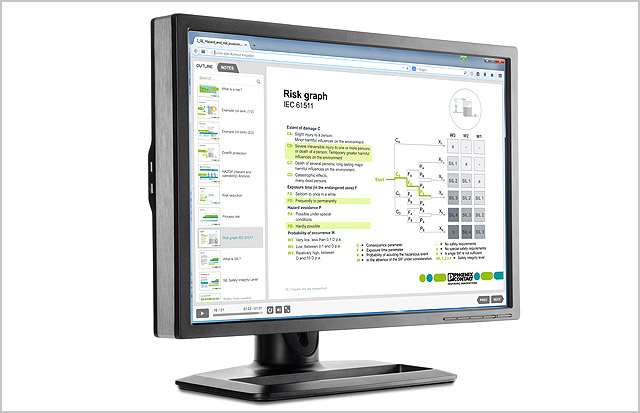
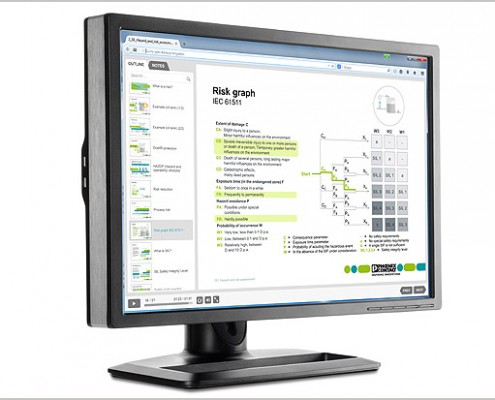
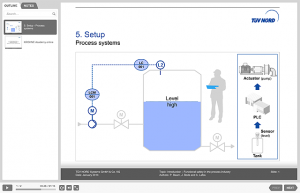 This eLearning module is intended as an introduction to the topic of functional safety and safety integrity level, and conveys key concepts and methodological requirements of functional safety based on the international harmonised standard IEC 61511 “Functional safety – Safety instrumented systems for the process industry sector”.
This eLearning module is intended as an introduction to the topic of functional safety and safety integrity level, and conveys key concepts and methodological requirements of functional safety based on the international harmonised standard IEC 61511 “Functional safety – Safety instrumented systems for the process industry sector”.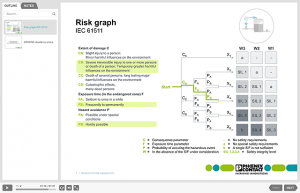 This module provides an overview of the requirements for process-control safety instrumented systems and conveys a method for risk identification and analysis. A simple example will show how the safety level for an overfill protection device is determined using a risk graph.
This module provides an overview of the requirements for process-control safety instrumented systems and conveys a method for risk identification and analysis. A simple example will show how the safety level for an overfill protection device is determined using a risk graph.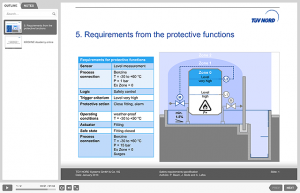 44% of protection circuits malfunction is based on errors in the safety specification. Module 3 provides an overview of safety planning as well as change management and shows a practical example for the creation of a safety specification.
44% of protection circuits malfunction is based on errors in the safety specification. Module 3 provides an overview of safety planning as well as change management and shows a practical example for the creation of a safety specification. In this module you will learn how the structure of a safety structure can be defined, particularly in regard to the required redundancy and its constructional implementation. A component selection is based primarily on failure probabilities specified by the manufacturer and the so-called operational proof.
In this module you will learn how the structure of a safety structure can be defined, particularly in regard to the required redundancy and its constructional implementation. A component selection is based primarily on failure probabilities specified by the manufacturer and the so-called operational proof. If no manufacturer’s data exists for calculating the failure rates, so-called generic failure rates can be used. The data sources of NAMUR NE 130, VDI/VDE 2180, SINTEF and Exida are presented in detail and the concepts compared with each other.
If no manufacturer’s data exists for calculating the failure rates, so-called generic failure rates can be used. The data sources of NAMUR NE 130, VDI/VDE 2180, SINTEF and Exida are presented in detail and the concepts compared with each other. This learning module covers the special requirements for sensors for process control and safety instrumented systems. In addition to an overview of the sensors typically used, you will be provided with information regarding the application of online diagnostics as well as partial proof test functions. The course also illustrates how operating equipment and safety instrumented systems can be used together.
This learning module covers the special requirements for sensors for process control and safety instrumented systems. In addition to an overview of the sensors typically used, you will be provided with information regarding the application of online diagnostics as well as partial proof test functions. The course also illustrates how operating equipment and safety instrumented systems can be used together. Pneumatic actuators used in valves of various designs, are typical in safety instrumented systems for the process industry. In this module you will learn which factors are critical for their function and where potential sources of error can be found. Operational proof is the primary key verifying the suitability of an actuator.
Pneumatic actuators used in valves of various designs, are typical in safety instrumented systems for the process industry. In this module you will learn which factors are critical for their function and where potential sources of error can be found. Operational proof is the primary key verifying the suitability of an actuator.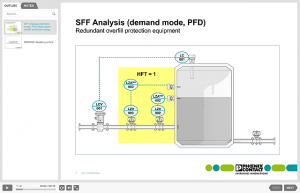 This module builds on module 2 and on the requirements for process-control safety instrumented systems and the structural (HFT, SFF) and mathematical proof (PFD) of an overfill protection device.
This module builds on module 2 and on the requirements for process-control safety instrumented systems and the structural (HFT, SFF) and mathematical proof (PFD) of an overfill protection device.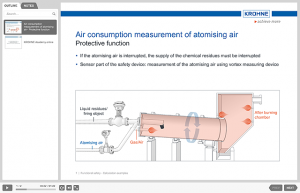 Based on five practical examples, this module shows in detail how the calculation of safety instrumented systems (SIS) is carried out. All areas are covered from the basic idea of the safety function, to risk analysis with safety integrity level and the determination of proof test intervals.
Based on five practical examples, this module shows in detail how the calculation of safety instrumented systems (SIS) is carried out. All areas are covered from the basic idea of the safety function, to risk analysis with safety integrity level and the determination of proof test intervals. For a smooth start-up, you should test the function of the system according to the specifications as early as possible. In module 10, you will learn about different test methods such as FAT, loop check and SAT, in which you can track failures at an early stage and rectify before start-up.
For a smooth start-up, you should test the function of the system according to the specifications as early as possible. In module 10, you will learn about different test methods such as FAT, loop check and SAT, in which you can track failures at an early stage and rectify before start-up.